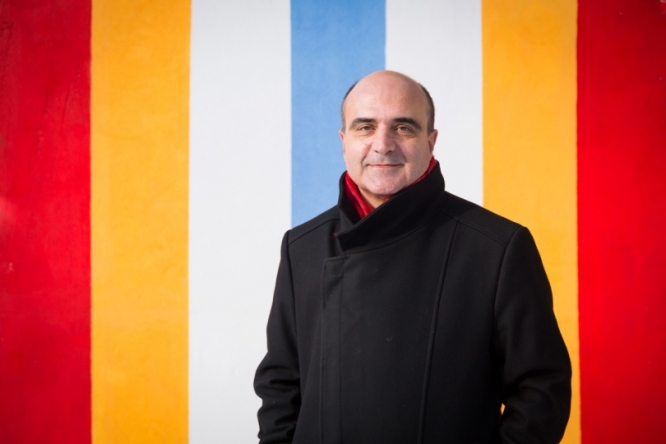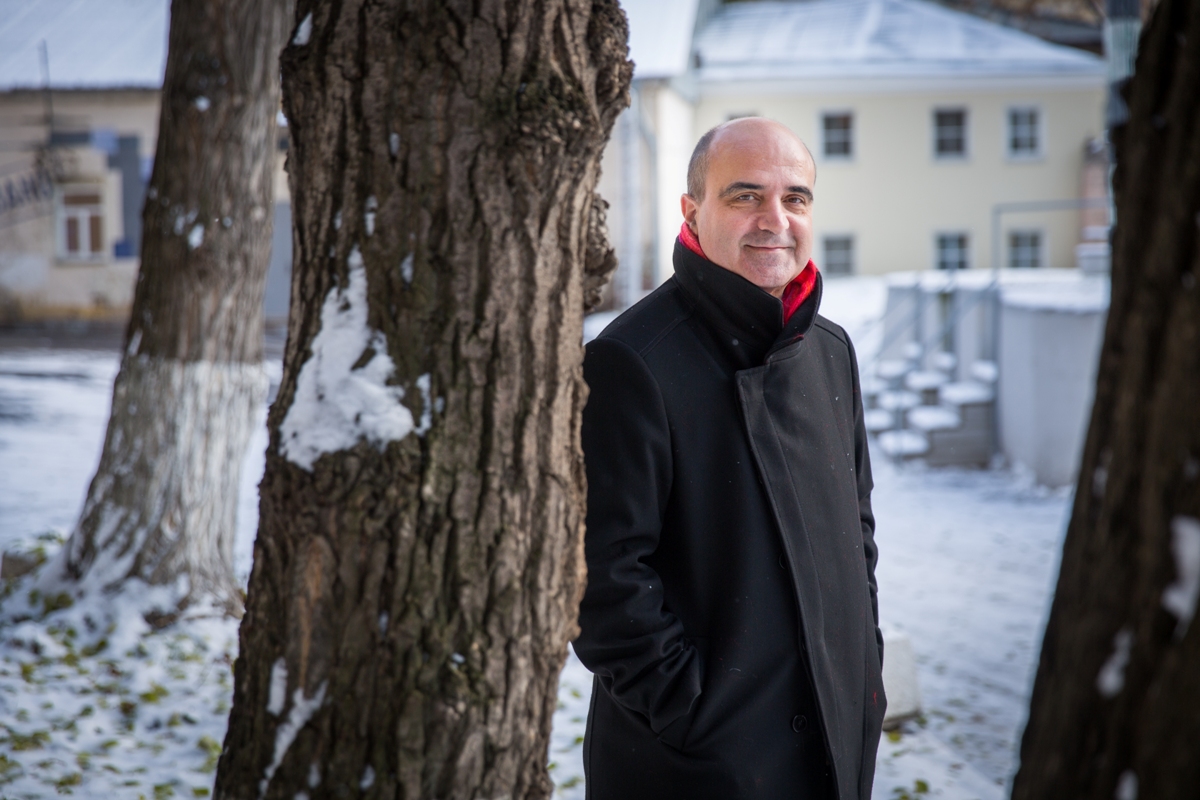City and Technology Will Prepare Professionals Able to Understand the Future of Urbanism

In 2017, the HSE Vysokovsky Graduate School of Urbanism is debuting its English-language master’s programme City and Technology.
The programme is based on the idea of learning by doing, and it is open to students from all over the world. In an interview with the HSE News Service, Vicente Guallart, who is the Academic Supervisor of the Laboratory for Experimental Urban Design, former Chief Architect of Barcelona City Council, and head of the City and Technology programme, discusses exactly how the new master’s programme will work.
Why ‘city and technology?’
Information technology has a huge impact on how cities develop, as it changes their physical appearance (spaces and buildings), the social atmosphere in a city, the ways people communicate there, the types of mobility a city has, and city administration as a whole. Our way of life and the way we approach city planning and construction will be different. But which approaches are different exactly? How and where will these changes occur? These are the questions that students will try to answer during their time in our new master’s programme.
What kinds of students will the programme accept?
Students from all over the world. This is why the programme is taught in English. As concerns their educational or professional background, there will not be any restrictions here, but we are seeing three key areas that overlap with urbanism in one way or another. First is city planning – we are anticipating architectures, city planners, and the like. Second is engineering, and engineering in a broad sense – people who understand digital technologies, as well as industrial engineers and energy specialists. And of course, third are the social sciences – people who study economics and sociology.
It’s important to have a good mix of students because we want to form a new category of professionals who are able to understand the future of urbanism. To use an analogy, we are moving in the same direction that biotechnologies were when they brought together engineering, biological, and medical achievements and skills.
Why should students come to Russia to study cities?
I’ve already gotten questions like, ‘why would foreign students come here, to HSE, to study and not go to a university in Western Europe or the U.S.?’ The thing is, Moscow has two wonderful traditions. The first is city architecture and design tradition. For example, in the 20th century we saw the constructivist movement, and here you can see and study some excellent examples of these buildings and structures. The other tradition is technological. Russia was the first to launch a satellite into space, the first to send a person there, and this tradition is still here. The quality of a math or physics education in Russia is still very high. It is important to take advantage of the heritage and potential behind these traditions.
But I have another argument to add – Moscow is a city that is changing right now before our eyes. The mayor and chief architect have a clear vision of the city’s future, and so much is happening all at once here. So many projects are being carried out, and I see Moscow as a very interesting subject for further research.

What learning style will the programme push for?
The programme is based on the principle of learning by doing. Students will study and take part in projects in the HSE’s International Laboratory for Experimental Urban Design, which will begin working actively in December of this year.
Further, we provide students with the opportunity to work in tech and design studios. They learn about how certain things are structured and created, and they see the process on very different scales – from the small and everyday to entire complex systems like cities. Our programme is not theoretical, but technical in every sense of the word. Students will spend all of their time thinking up and developing different technological solutions and applying them to urban planning.
But we also offer students three types of seminars – one in cultural history, one in economics and the social sciences, and one in management. It’s impossible to understand how a city functions without this knowledge as well.
How is someone else’s experience useful?
The programme that is opening up in the HSE Graduate School of Urbanism is a ‘standard’ two-year master’s programme. But the Institute for Advanced Architecture of Catalonia (IAAC), of which I’m the head, has a shorter programme of a similar name. I would like to take the experience, achievements, and contacts that we’ve amassed over the programme’s many years of operations and bring them to Moscow to make the HSE programme even more effective. We will, of course, collaborate with IAAC, as well as with other schools and companies from around the world, including Foster and Partners, ETH Zurich, Columbia University, and others.
At the same time, I would also like to work very closely with our Russian colleagues and Russian professors, particularly the younger ones. I see one of my tasks as putting them on display, so to speak. By teaching in the programme, they will become well known to the foreign students and foreign professors who come to HSE. This is the essence of internationalisation.
How can the programme be of use to Russian cities?
In order for the programme to be truly successful, it needs strong ties with companies and local city government in addition to international connections. We have already started working with the city of Moscow. In particular, we helped set up the Russian pavilion at the 15th International Architecture Exhibition in Venice. And I am certain that our collaboration with the city of Moscow will continue developing. Not only with Moscow, though, but with other regions as well, even as distant as the Russian Far East.
As for who we would like to see as students, we are hoping for people from business and city administration who do not know enough about how the contemporary city functions and about which architectural and technological solutions make the modern city convenient and comfortable.
What will students do after graduating from the programme?
I see three main career paths, though there are of course many more. First, our graduates will be free professionals and entrepreneurs who can set up their own architecture or consulting firms. Second, they will be able to work at companies, including manufacturing companies, by combining their design skills and their cutting-edge technological knowledge. Third, they can go on to work in government administration.
If society is more technologically advanced than the officials who manage a city, then we have a very serious problem. A paradigm shift is currently happening with a lot of things becoming deregulated. Take, for example, driverless cars, drones, or new methods of distributing electricity generated by households. City government should have people who understand how quickly technology changes and how to use technology to develop cities and improve people’s quality of life instead of standing in the way of technology. These are the things the graduates of our programme will be able to do.
How does one apply for the programme?
For more information on how to apply for the City and Technology master’s programme, please visit our website.
Original article
- Tags:
- education




